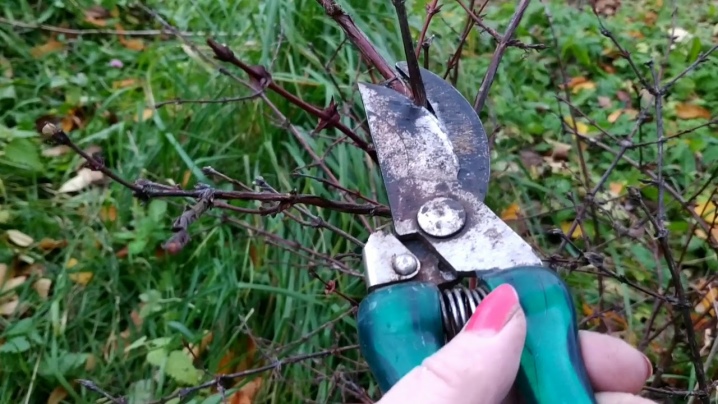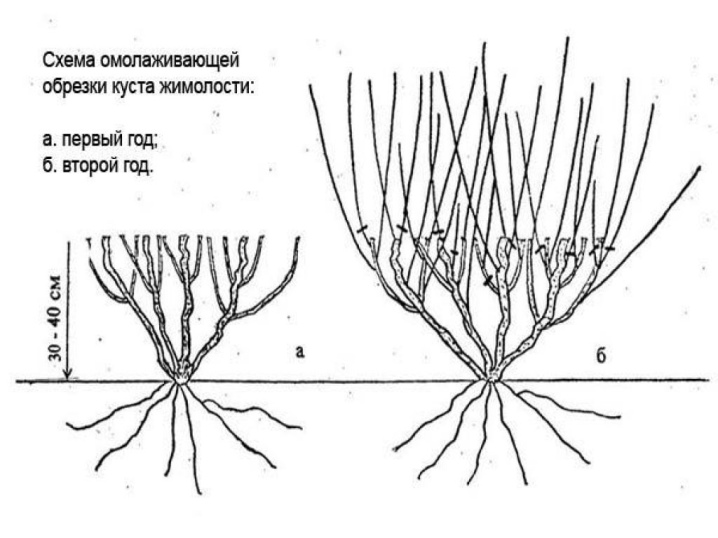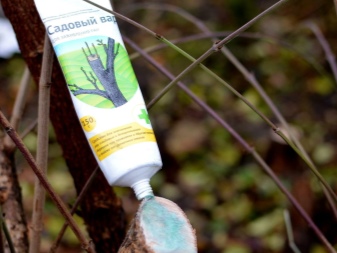How to prune honeysuckle in spring?

Pruning is one of the mandatory components of agricultural technology when growing fruit and ornamental plants, and honeysuckle is no exception.... Choosing it for your garden or a local area, you need to comply with all conditions to obtain a rich harvest and an attractive appearance. When you start pruning, you need to know how to properly perform this procedure so as not to harm the plant.

What is it for?
Many modern gardeners argue about pruning honeysuckle. Some believe that the work must be done correctly immediately after planting the shrubs. And there is also an opinion that it is necessary to prune honeysuckle only after reaching the age of 10. In order to competently comply with the conditions of agricultural technology, you need to understand the development of culture.
Gardeners without experience should pay attention to the rules for performing such a procedure, drawn up by specialists.
Honeysuckle pruning manipulation is performed to achieve the following goals:
-
the formation of the plant in order to increase its decorative properties and positively affect the yield;
-
regulation of growth and fruiting processes;
-
thinning the crown so that the sun's rays reach the fruits;
-
increasing the taste of the crop;
-
getting rid of damaged, dry and diseased shoots;
-
providing better ventilation.

And also pruning is carried out in order to grow plants of the required height.
Dates of the
It is recommended to prune honeysuckle in early spring. This period is ideal for rejuvenation or plant sanitation. And also in early March, you can form garden honeysuckle. In the first days of spring, they get rid of branches that have outgrown the 8-10 year mark. Pruning the bushes in cool weather, while the heat has not yet had time to establish.
Young shrubs can also be cultivated during this period. They are carefully examined for the presence of deformed and frozen branches. If they are found, they are deleted. Pruning young honeysuckle in spring is done to prevent the crown from forming too thick.

You can start the procedure immediately after transferring the shrubs to a permanent growing place.
In subsequent years, pruning is carried out after germination of the shoots near the tillering node. The work is performed from April 20 to May 25. In the borders of the southern regions, spring pruning is performed a little earlier, shifting the dates by about 7-10 days. This manipulation can be combined with the prevention of the appearance of aphids.

Pruning can be carried out at other times of the year, for example, in the fall. The best period is from early September to mid-October. During work, the shape of the shrub is corrected, root suckers and excess shoots are cut off.

Schemes and technologies
Many novice gardeners are afraid to prune young shrubs for fear of injuring the plant and reducing yields. But without proper care for honeysuckle, regular fruiting should not be expected, and the taste of the berries will be inexpressive. It is necessary to thin out the plant mass, to prevent harmful insects from multiplying... And also it is an additional prevention of bacterial infections.

Throughout life, honeysuckle goes through the following stages:
-
initial phase, during which the shrubs stretch upward, is called juvenile;
-
when the trunk begins to expand, the plant goes over in the generative phase;
-
the last stage - bluish, during which the honeysuckle fades.
During the transition to the last phase, the crown becomes too thick and heavy. Under its weight, the trunk begins to bend, breaks and rots. The harvest is shallower, as there are only enough nutrients to support life. To help the plant, get rid of old and weak shoots.

For a young plant
The formation of the crown should be done almost immediately after the transfer of seedlings to open ground to a permanent planting site. First you need to select several zero shoots (about 4-5 pieces). They grow from the ground like the main trunks. Branches that are thinner are removed under the knot.
So that the shrubs do not get sick, the sections must be treated with a special garden varnish or other protective agent.
With the onset of the next season, plants that have undergone wintering are examined for new shoots. All branches growing at an acute angle are pruned. Otherwise, they can cause cracks and fracture of the barrel. In order for aeration to take place without problems, the longitudinal stems are cut almost under the base.
No more than two branches should be laid in a whorl. If you do not follow this simple rule, not only oxygen metabolism worsens, but also the yield suffers. Overgrowth will deprive the plant of essential nutrients.

For an adult
Pruning is also needed for older shrubs to rejuvenate the old plant and promote good yields.... The supporting clipping scheme is pretty straightforward and straightforward. The main purpose of this procedure is prevent the crown from growing too much, keep the charming appearance of the plant... Recommended garden honeysuckle size: height - 2 meters, width - one and a half meters.

Roots and replacement shoots are removed from all shrubs that are 5 to 7 years old. These are extra shoots that take a large amount of nutrients from the plant, without which it will not be possible to achieve a high-quality harvest.
Removal of faded buds is performed when caring for some varieties. You can start work only after the end of the fruiting period and picking berries. If necessary, you can free the bush from broken and old shoots.

In edible varieties of honeysuckle, the shoots are not shortened, otherwise the yield can be reduced.
For decorative and curly
Caring for decorative varieties has certain characteristics, but it is quite simple. Crown cleaning in climbing plants is carried out with the onset of autumn, after the foliage has fallen off. The lateral outgrowths are removed under the base, and the main trunk is suspended with ropes. Honeysuckle with high decorative qualities often becomes an element of a living composition. It is perfect for decorating any plot of land or creating a green fence.

Due to the high vegetative indicators of the culture, it is necessary to monitor its condition immediately after transplanting the honeysuckle to a permanent growing site.
Features of sanitary pruning
This pruning option does not depend on the season. It is performed as needed.
The procedure should be performed in the following cases:
-
change in the appearance of the crown, including its mechanical deformation;
-
the appearance of dried branches;
-
bush disease;
-
an invasion of harmful insects that live on the leaves and branches of honeysuckle.

Experienced summer residents are able to determine by their appearance whether it is necessary to perform pruning, or if this procedure can be dispensed with. Sanitation must be carried out with the obligatory observance of the rules of garden hygiene.
To carry out the work, you need to prepare everything you need:
-
thick gloves;
-
sharp secateurs;
-
clean garden knife;
-
resin or var;
-
disinfecting composition.


The pruning process is step by step and in detail:
-
using the necessary tool, you need to remove an unnecessary escape;
-
the places of the cuts are treated with a special garden pitch or resin;
-
with a disinfecting solution, wipe the garden tools when moving from plant to plant.


Major mistakes
For novice summer residents, a list of recommendations has been compiled, which must be heeded for successful pruning
Here are some tips from seasoned gardeners.
Broken, rusty or poorly sharpened tools should not be used. Otherwise, burrs will remain on the branches, and the bark will be damaged. All this contributes to the development of infection.

The second common mistake is not getting rid of the shoots throughout the season. If shoots are not removed in time, the crown greatly increases in size, becoming too thick. The branches begin to interfere with each other and break. This all leads to damage to the wood tissue.

Some farmers remove only the outer root growth, which is why the inner part of the crown remains dense. If you don't do full pruning, after about 3-4 years, the lush vegetation will start to rot due to lack of ventilation and sunlight.

It is recommended to reduce the number of branches, but give them the opportunity to fully develop and bear fruit.






The comment was sent successfully.